I’m a beautician so I knew the tiny white spot on my lip was worrying. Doctors kept sending me home but I was right… it nearly cost me my jaw
A beautician has revealed how a ‘dodgy’ white spot on her lip ended up being skin cancer – and it would have gone unnoticed if she hadn’t pushed for a proper diagnosis.
Melissa Floss, 52, from Western Australia, told FEMAIL she went to several medical professionals before anyone finally knew what was wrong.
‘I went to the doctor and she said it was nothing. That didn’t suit me, so I went to my dentist for a second opinion and… [they] sent me home too,” Melissa said.
Melissa felt like she was being brushed aside, so she sought a third opinion from another GP.
Melissa Floss, 52, went to her GP after noticing a white spot on her lip (visible on the lower left side of her lip) – but was told ‘it was nothing’
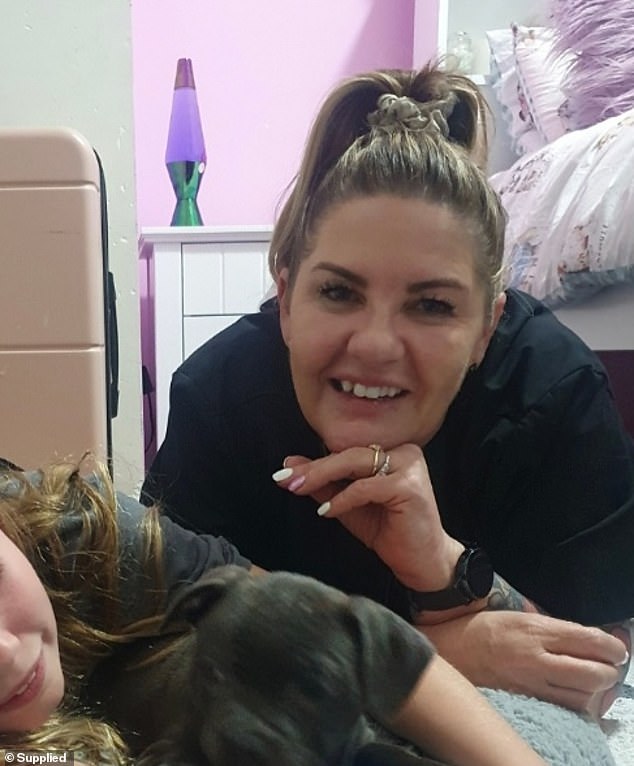
It hadn’t reached her bone yet – so she was able to keep her lower jaw (spot pictured on the right side of her lower lip)
“If she had told me it was nothing, I probably would have stopped asking questions,” she said.
But this doctor did not fob her off.
Instead, they used a special tool to closely examine the spot on Melissa’s lip — which at first glance looked like a lighter patch of rough skin — and sent her to a dermatologist..
“The doctor immediately told me it was skin cancer, but he wasn’t sure how far along it was,” she said.
The cancer was a squamous cell cancer. Although not fatal, the disease could have caused more serious problems and spread if left untreated.
“I was told it was in my tissue and if it had gone too far they would have to take my jaw,” she said.
Terrified, Melissa paid cash for the best surgeon she could find to operate quickly.
“The public waiting list was too long,” she said.
The morning she had surgery, doctors warned her that she could wake up without her lower jaw.
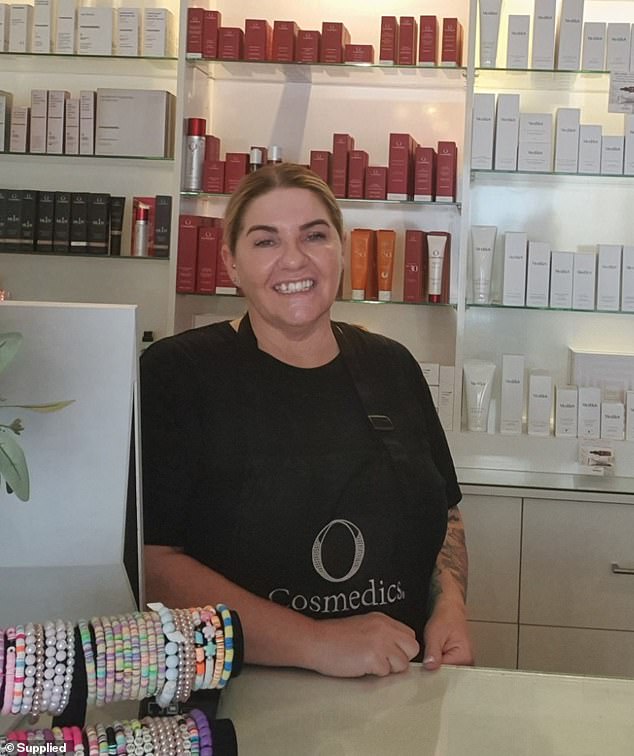
Melissa works in the beauty industry and has noticed dodgy spots on clients before, so she kept pushing
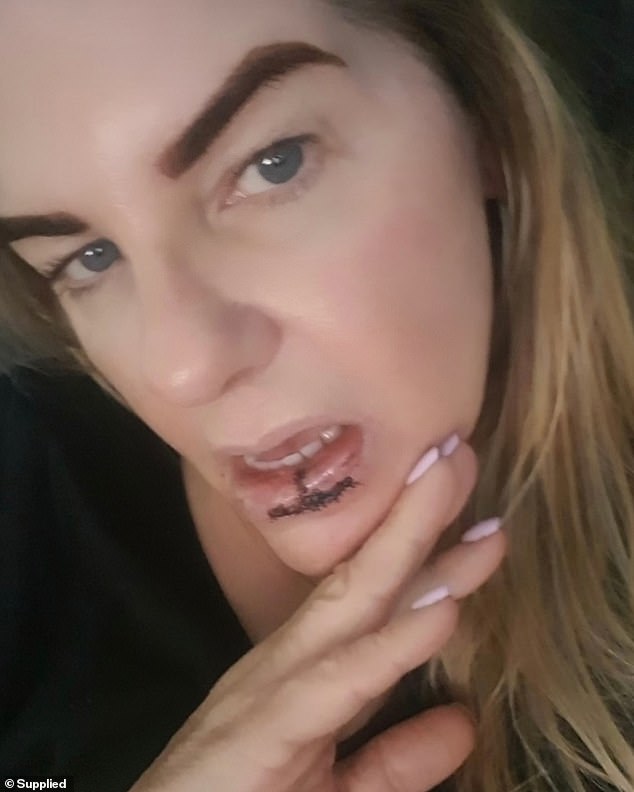
Months later she had had surgery and crossed her fingers the cancer had not reached her bone
That was all she could think about as they took her to the operating room.
“I work in the beauty industry, my face is everything,” she said.
When she woke up hours later, she asked to see her face. Although it was hard to watch, she was relieved to see that she was still in one piece.
‘It was confrontational, but I knew I still had a jaw. “I couldn’t see behind all the bandages and bandages and stuff,” she said.
The mass was only 1.7 cm by 1.6 cm and was completely removed with a large enough margin that no further treatments were required.
During her decades in the beauty industry, Melissa has warned some of her patients about suspicious-looking spots.
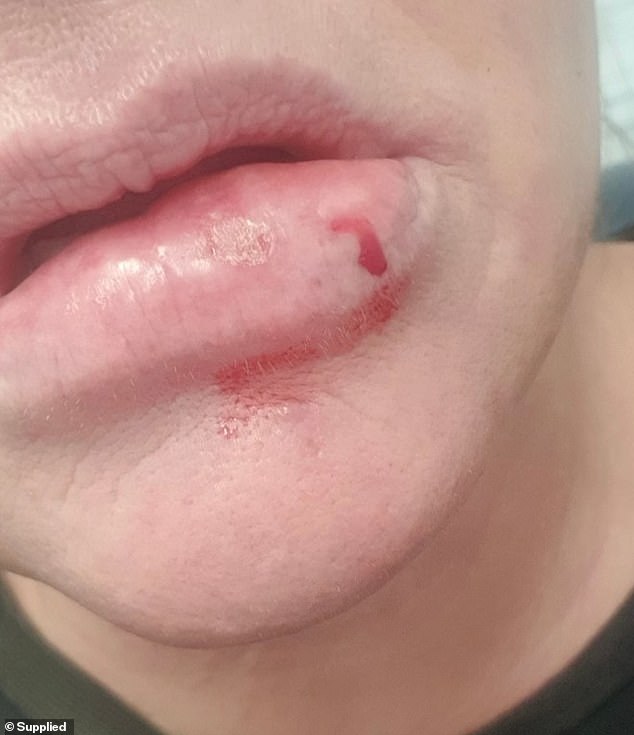
The doctors took a closer look and realized it was cancer
Many have returned to thank her for warning them.
“I can’t diagnose it, but if I think something is wrong I will let them know that they should consider getting it checked out for their peace of mind,” she said.
After her own journey, it has made her even more persistent.
“If you think something is wrong and you keep getting rejected, get a second or third opinion,” she said.
She now also regularly gets moles on her body and refuses to take any more risks.
Melissas The experience comes amid calls for better use of the skills of estheticians and estheticians in screening for potentially fatal melanoma and skin cancer.
Industry professionals say this will take pressure off an already strained healthcare system.
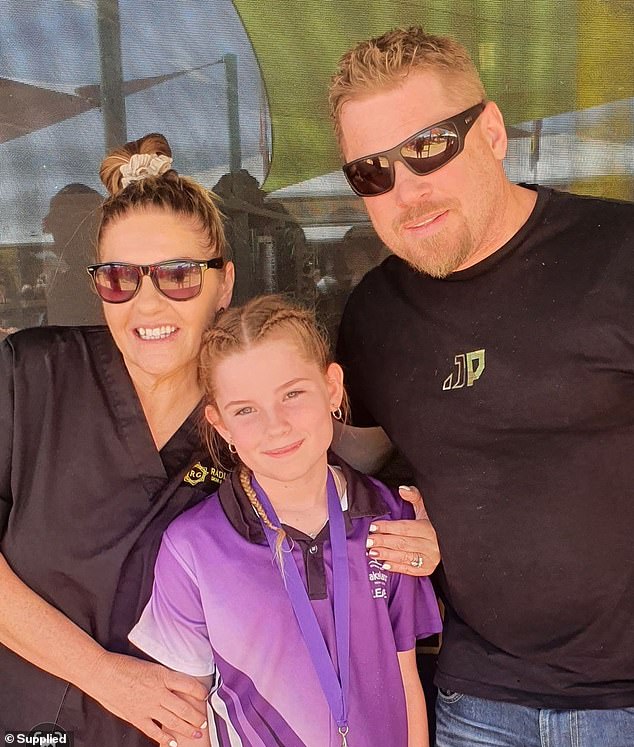
Melissa said that if the third care provider had fired her, she would have simply ignored the white spot
Sydney-based skin genomics and aesthetics specialist Stefan Mazy, CEO of DermR Health Solutions, said estheticians and estheticians become potential lifesavers by voicing their concerns.
“People working in the beauty, anti-aging and hairdressing industries are in a great position to notice skin abnormalities on a client’s face, neck, ears and scalp during routine visits,” Mazy said.
‘Therapists spend up to an hour at a time in direct contact with the client’s skin several times a year, and they can also reach areas that are difficult to see. With such intimate and frequent interactions, they would know the skin better than the client’s GP or dermatologist.”
Mr. Mazy has more than 15 years of experience in the aesthetic industry, specializing in skin genomics training and education, and more than five years specifically dedicated to skin cancer and genomics.
He is also developing a new diagnostic tool for skin cancer that will allow estheticians, nurses and paramedics to screen whether a lesion could be cancerous.
“A therapist noticing a suspicious spot can mean the difference between life and death for someone,” he said.
‘We know that 90 percent of melanomas can be treated successfully if detected early, and early detection is associated with high survival rates.’
Maria Enna-Cocciolone, the CEO of Australian skincare brand O Cosmedics, and her team spend a lot of time and effort educating therapists not only about products but also about skin health, and she is aware of many therapists who have identified melanoma.
“A therapist can make the difference between discovering something early or unfortunately discovering it when it’s all too late,” says Ms Enna-Cocciolone.
‘Over the years I have heard hundreds of stories where therapists have emphasized spots, moles and lesions, and insisted on a doctor’s approval before performing treatments and even active skin care, only to have their suspicions confirmed.
‘Given the scope of treatments therapists perform, many have identified life-threatening basal cell carcinomas, saving many a life and the intense treatment trauma associated with late diagnosis.’
Mr Mazy said that when a therapist notices a suspicious spot or change in the skin and starts a conversation, the client can be encouraged to take the next step and have it properly examined.
Australia is the skin cancer capital of the world, and treatments for melanoma and other forms of skin cancer are the largest cancer expense in the healthcare system, costing more than $1.7 billion per year.
